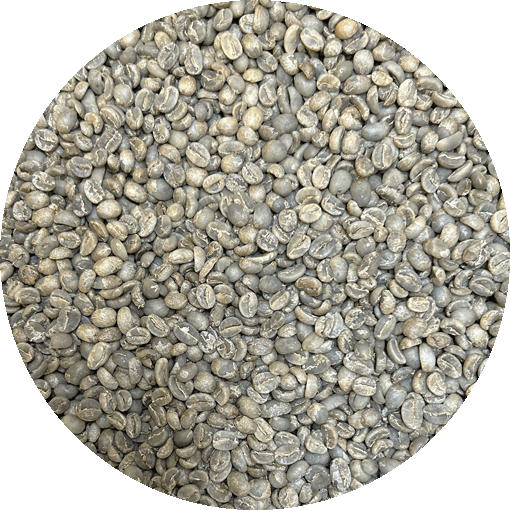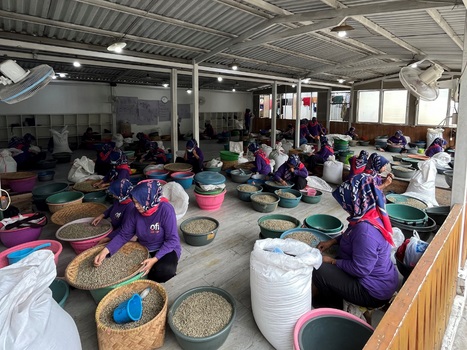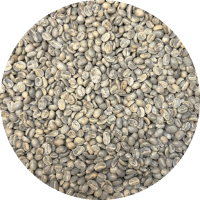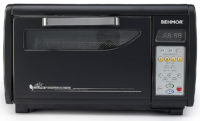Description
A stellar and unique Indonesian! Beautiful washed processing versus the traditional wet-hulling; gem of a bean. This is not your average Sumatra/Sulawesi/Bali type cup. Reminiscent of our old Sulawesi Toarco offerings that unfortunately fell apart in the pandemic. Very sweet and creamy coffee, lower acidity, with rich rustic chocolate like undertones and hints of soft fruit.
Coffee has been grown in the area surrounding Gunung Tilu since 1857 (“gunung” is the word for “peak” in the local language. Tilu has been designated as a nature preserve, and the 33 smallholder farmers who contribute to this lot farm their plots amongst the rich biodiversity of the area. Working with group leader, they sell their ripe cherry directly to Covoya’s wet mill at Tenjolaya Ciwidey. From there the cherry is immediately pulped and undergoes 16 hour fermentation, followed by pulping and drying in solar dryers. Cherries are floated and only the ripest red cherries are selected to ensure high cup quality.
Tasting Notes: A great cup from light to dark: a clean, rich and smooth cup. To see it shine and differentiate itself from normal Indonesians, keep it in the light to medium roast ballpark. Just a hint of brightness upfront, sugarcane like sweetness, good body with a chocolate like lingering aftertaste. It does have a little earthy terroir, but is almost more playing on some spice notes than traditional Indonesian “muddiness”. Darker roasts are pretty hefty cups, still overly sweet but more simple in its taste, chocolate and spice like with some complimenting roasty notes. Darker roasts would work very well for espresso or cold brew, while lighter roasts would excel for drip or pour over.
Roasting Notes: Medium chaff levels and even roasting, an easy to roast bean. Comparatively to your average Indonesian, it is a little smaller beaned but they will grow good during first crack. Great tasting shortly after roasting but will gain a little depth to the flavors with a longer setup. Recommend erroring a little lighter than darker to see the cup shine.
Although coffee was first planted successfully on Java around 1700, cultivation spread slowly throughout what would become the great archipelagic state of Indonesia. In fact, the green coffee of Java served as progenitor to the coffees of far off Central America and had begun its ascent to being considered, alongside Arabian Mocha, as one of the best coffees in the world, long before commercial cultivation spread to nearby islands. At the same time, it should be noted that nearly all coffee from any island in the Dutch East Indies was considered “Java” until the early 20th century, so whose to say what Java was before then.
Some of the large coffee estates created by the Dutch 175 years ago can still be found on the volcanic Ijen Plateau at the eastern tip of Java, but most coffee farmers are smallholders growing coffee on an average of 1.5 hectare, many of them among a cluster of volcanoes in West Java, where coffee cultivation first began on the island. Although disease resistant Robusta became the dominate coffee crop, West Java has seen a steady increase in Arabica production in recent years. Arabica generally grows above 1200 meters and virtually all coffee is fully washed.













bcockman (verified owner) –
The roasting and tasting description by Burman is spot on. I just ordered another 5 pounds. I want to keep this around for a while for my daily espresso at a medium roast level.